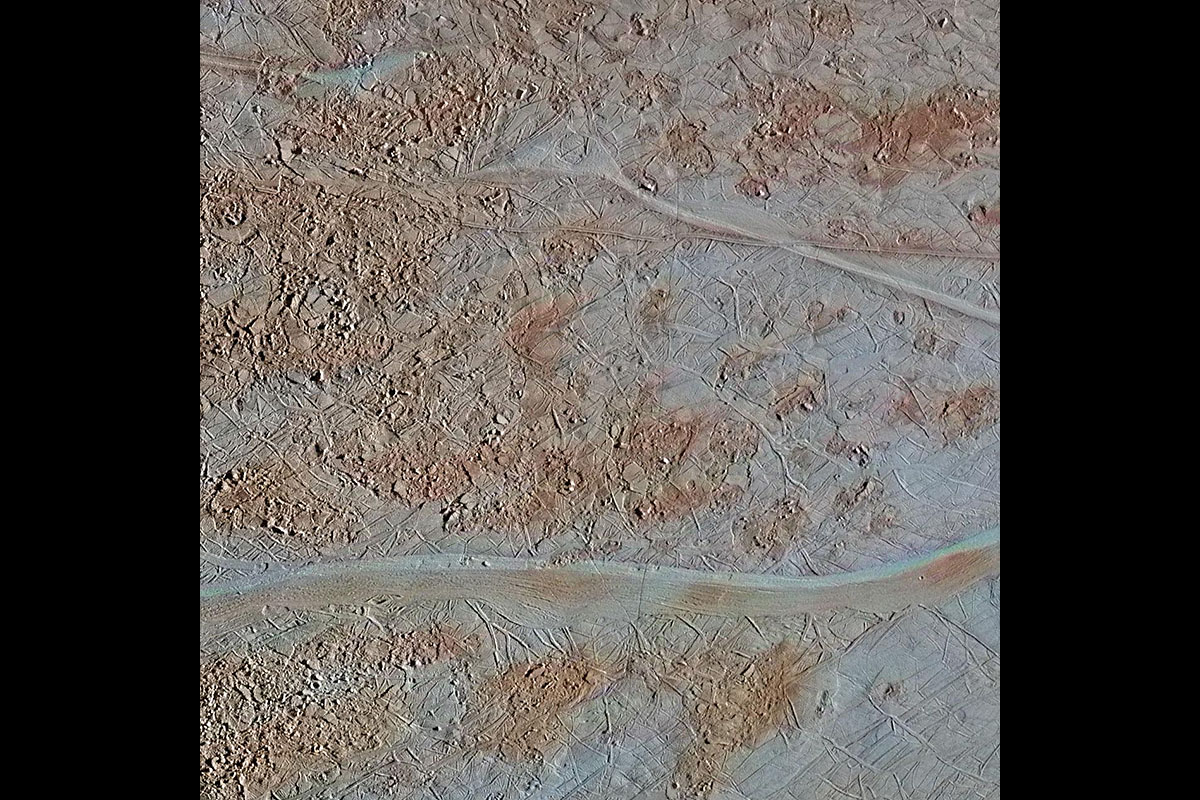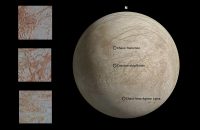This image shows chaos terrain where blocks of material have shifted, rotated, tilted and refrozen. Scientists use this as a puzzle for clues about how the surface has changed. The area is called Chaos Near Agenor Linea for its proximity to the wide band of that name at the bottom of the image. (NASA/JPL-Caltech/SETI Institute)
Home This image shows chaos terrain where blocks of material have shifted, rotated, tilted and refrozen. Scientists use this as a puzzle for clues about how the surface has changed. The area is called Chaos Near Agenor Linea for its proximity to the wide band of that name at the bottom of the image. (NASA/JPL-Caltech/SETI Institute) This image shows chaos terrain where blocks of material have shifted, rotated, tilted and refrozen. Scientists use this as a puzzle for clues about how the surface has changed. The area is called Chaos Near Agenor Linea for its proximity to the wide band of that name at the bottom of the image. (NASA/JPL-Caltech/SETI Institute)
This image shows chaos terrain where blocks of material have shifted, rotated, tilted and refrozen. Scientists use this as a puzzle for clues about how the surface has changed. The area is called Chaos Near Agenor Linea for its proximity to the wide band of that name at the bottom of the image. (NASA/JPL-Caltech/SETI Institute)




